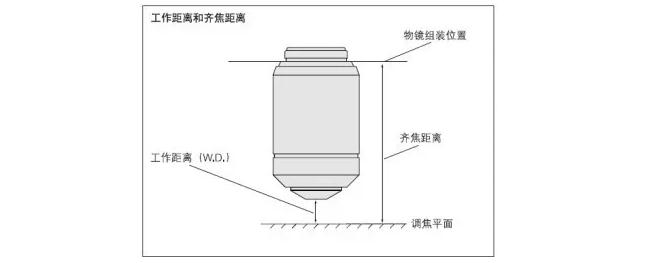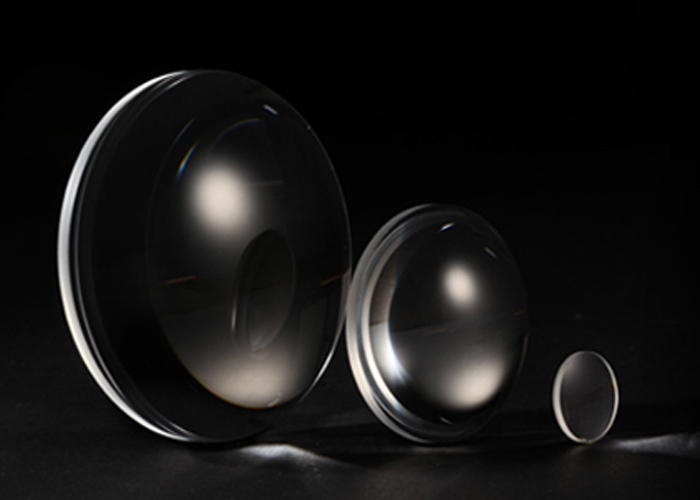
1. Magnification: The "10" and "4" in the ascending numbers of the objective lens indicate that the magnification of the objective lens is 10 times or 4 times, where the magnification is not the magnification of the area, but the magnification of the length or width of the image, and the total magnification of the microscope is equal to the product of the magnification of the objective lens and the eyepiece.
2. Resolution: resolution refers to the small distance between two points that can be distinguished. The smaller the resolution distance of the microscope, the higher its resolution, that is, the better its performance. The resolution of the microscope is determined by the resolution of the objective lens, which is determined by its numerical aperture (mirror rate) and the wavelength of the illuminated light. When the light uniformly passes through the specimen, the resolution distance of the microscope can be formulated as follows: D=0.61λ/NA(D represents the resolution distance of the objective lens, in nm; λ represents the wavelength of illumination light, unit nm; NA represents the numerical aperture of the objective lens, so the resolution of the microscope is proportional to the numerical aperture. (The smaller the D value, the higher the resolution).

3. Numerical aperture (mirror rate) : "0.25" and "0.10" in the objective lens are the numerical aperture of the two objectives, respectively, which represents the ability of the front lens of the objective lens to collect light from the sample. The size of the numerical aperture can be used by the formula NA=Nsinα, where N represents the refractive index of the medium, N=1 in the air, and N can be increased to 1.5 under the oil lens; Alpha represents the half Angle of the objective aperture (Figure 2), and the larger the half Angle of the objective aperture, the more light will enter the objective.

4. Mechanical tube length: The "160" on the objective in Figure 1 means that the objective must be used on a microscope with a mechanical tube length of 160mm. The distance from the objective lens positioning surface to the eyepiece positioning surface is 160mm, which is called the mechanical tube length, that is, the remaining tube length after removing the objective lens and the eyepiece. Different countries have different provisions for the length of the mechanical cylinder, mainly 160mm, 170mm and 190mm.
5. Cover glass thickness: as specified above, the standard thickness of cover glass is 0.17 ± 0.01mm. The number "0.17" marked on the objective lens in Figure 1 indicates that the thickness of the cover glass is required to be 0.17mm. If the thickness of the cover glass is greater than 0.18mm, stray light (not the light reflected by the mirror) will enter the objective lens, resulting in a difference. When the thickness of the cover glass is less than 0.16mm, the light that should enter the objective lens cannot enter the objective lens. Moreover, it also produces the effect of contrast effect observation. In addition, due to the similar refractive index of cedar oil and glass, the oil lens objective does not have the difference problem caused by the thickness of the cover glass is not standardized, that is, the thickness of the cover glass has almost negligible influence on the observation effect of the oil lens objective, and can be used in the case of having and without cover glass (such as blood smear). Therefore, some oil mirrors do not mark "0.17" and replace it with a horizontal line "-".

6. Working distance: The working distance is also called the object distance, that is, the distance between the surface of the lens in front of the objective lens and the object to be tested.
To sum up: the meanings of the four data in the figure are as follows:

① The "10" and "4" in the ascending numbers of the objective lens indicate the magnification of the objective lens.
②The "0.25" and "0.10" in the objective lens are the numerical aperture of the two objectives, that is, the mirror mouth rate, which is related to the resolution of the microscope, the larger the value, the higher the resolution, that is, the better its performance.
(3) The "160" on the objective lens is called the mechanical tube length, which refers to the distance between the objective lens positioning surface and the eyepiece positioning surface of 160mm, that is, after removing the objective lens and the eyepiece, the remaining tube length, indicating that the objective lens must be used on a microscope with a mechanical tube length of 160mm.
④ The number "0.17" marked on the objective lens indicates that the thickness of the cover glass required by the objective lens is 0.17mm.

















